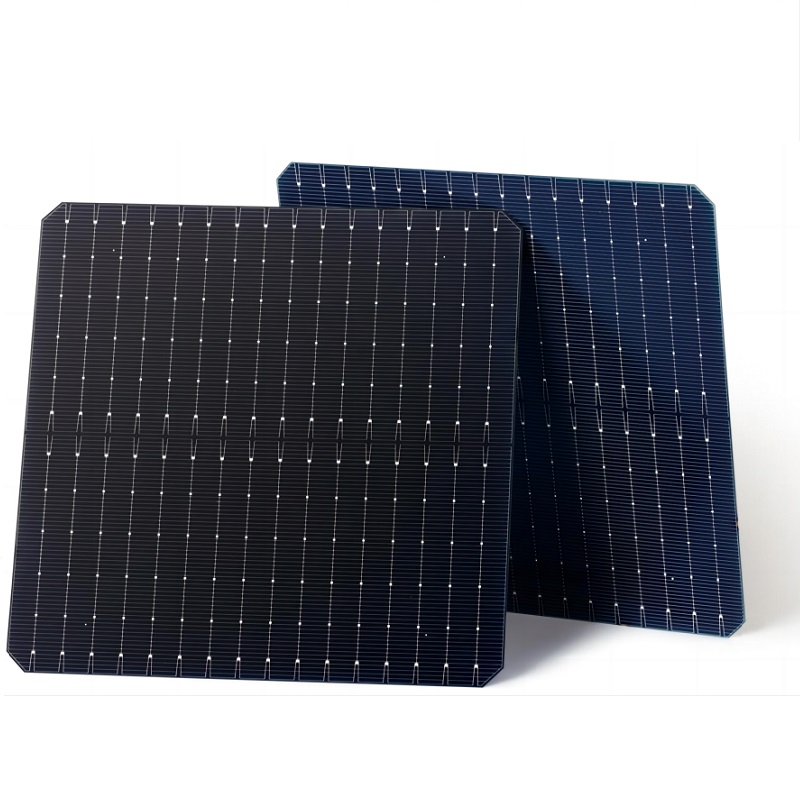The cost reduction direction of TOPCon is silicon wafer, silver paste, equipment cost, yield rate, etc.
Silicon wafer:
N-type silicon wafers are made by doping phosphorus. Since phosphorus atoms have poor solubility with silicon, the purity and production process control of silicon materials and auxiliary materials are higher and the cost is higher. Compared with P-type silicon wafers, Definitely a premium. However, with the large-scale production of N-type silicon wafers and technological advancement, the process of thinning and large-size wafers is accelerating, which will drive down the cost of silicon wafers.
Silver paste:
TOPCon solar cells (front + back) use high-temperature silver paste, and the consumption is about 150mg/piece. In the future, as the consumption of silver paste is reduced through multi-busbar technology and reduced fine grid width, it is expected to drop to 110-130mg/piece. And the improvement of more new process technologies such as laser printing and copper electroplating is expected to reduce the cost of silver paste;
Equipment cost:
With the rapid development of the domestic photovoltaic industry, more and more production equipment is localized, which will reduce the investment amount of single GW equipment. In terms of technology, TOPCon solar cell technology has introduced three new processes compared to PERC solar cells . The production line only needs to add three new equipment. In the future, as equipment efficiency improves and equipment prices fall, depreciation costs are expected to further decrease.
Quality:
The current core factor limiting TOPCon mass production is that the yield rate is generally lower than 95%. Continuous optimization of each process section can improve the product yield rate.
TOPCon solar cell efficiency improvement ideas
Reduce electrical losses
The core of TOPCon's efficiency improvement is to reduce electrical losses, including methods such as SE, double-sided POLY, global passivation, and stacked cells.
Various manufacturers are about to introduce SE platforms, which is expected to increase efficiency by 0.2%-0.4%; double-sided POLY will be introduced in 2024, and mass production efficiency is expected to increase to more than 26%; global passivation technology will be introduced in 2025, and efficiency is expected to increase to 27% , and then the main line of efficiency improvement is the development of laminated solar cell technology. At present, the efficiency of N-type solar cells of various manufacturers is improving rapidly. The mass production efficiency of mainstream manufacturers is between 25% and 25.5%. In the future, it is expected to achieve this through the introduction of SE platform, double-sided passivation and breakthroughs in laminated solar cell technology. Efficiency is further improved.
Selective Emitter
The SE technology in TOPCon is similar to the SE principle in PERC. High/low concentration doping inside/outside the electrode can improve the minority carrier lifetime of the silicon wafer and improve the solar cell efficiency. SE (selective emitter technology) refers to high-concentration doping to form a P++ layer at and near the contact area between the metal anode and the silicon wafer, and low-concentration doping to form a P+ layer in areas other than the electrode.
This technology can not only ensure a low contact resistance between the silicon wafer and the electrode, but also reduce the recombination rate on the surface of the silicon wafer to increase the minority carrier lifetime of the silicon wafer, thereby improving the conversion efficiency of the solar cell . The boron doping process is more complex and the laser power is higher; there may be two types of passivation layer burn-through during the process, and the laser power needs to be accurately controlled.
Laser doping in TOPCon is divided into two paths: primary boron expansion and secondary boron expansion. Currently, primary laser direct doping is the mainstream choice for mass production. One-time boron expansion is similar to the standard boron expansion process in the PERC production process. The process is relatively simple. Only one laser doping, boron expansion and cleaning are performed under this path. The process is relatively simple and the equipment investment is low, but the technical difficulty is high.
Double-sided POLY
At present, the passivation structure is mainly used on the back surface of the solar cell , while the front surface still uses the traditional solar cell structure. Double-sided passivation/global passivation can further improve efficiency. In order to further reduce the carrier recombination rate on the solar cell surface and reduce the contact resistance, P-poly can be performed under the front electrode, and a double-sided/global passivation structure can be used to further improve the front efficiency.
The front side of the silicon wafer base of the double-sided passivation contact cell is provided with a polysilicon layer, and the back side of the base is a P-doped poly passivation layer. Unlike double-sided passivation, which only performs P-poly on the bottom of the electrode, global passivation technology performs P-poly on the entire front of the solar cell , which is expected to further improve efficiency.
